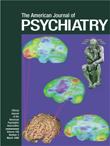My pet peeve, in this Decade of the Brain (which has surely been delivering the goods), is psychodynamic case presentations at Grand Rounds that fail to attempt any synthesis with known and presumed aspects of the patient’s nervous system that would reward a psychotherapist for having gone to medical school. This book is a sourcebook of ways to put mental and neural data together that reaches and perhaps at times exceeds what is now known. Instead of a cool artificial intelligence model of the “society of mind” described by Minsky
(1), Harris (with apologies in his introduction) personifies the mental agencies and presents them in dynamic clash and imbalance. This is accomplished with deference to Freud the neurologist and Freud the psychoanalyst. Where Freud drew upon the myth of Oedipus, Harris ransacks Bullfinch’s Mythology
, not only to name a neuromental pantheon he calls the Acropolis of the Mind (Zeus, the executive, synthesizes reflection; Athena, the supervisor, integrates subjectivity; Arachne, the procedural self, imitates, etc.), but also for pseudonyms to disguise and typify his many case histories in their human/Olympian struggles. Many of these struggles are with the sequelae of childhood sexual abuse, but the book proceeds to deal with every category of development and psychopathology under the sun. To give an example: straying briefly from his Greek gods and goddesses, Harris describes the normal infant learning about the taste of liver:
Once the amygdala casts a spell of aversive cathexis on data that inputs into it, the fate of that data is like the fate of the baby princess in the story of Sleeping Beauty. The septal nucleus (a limbic system subcortical conditioner), like the good fairy godmother, can only ameliorate the amygdala’s negative conditioning as it happens. If the amygdala says no to reward, it will take the ventral tegmental dopaminergic consummation system’s pleasure helpers, which monitor the salient pleasure-promoting qualities of stimuli, a century to undo the amygdala’s command. Once we do not like the taste of liver, that is it. (p. 58)
Harris’ approach is comprehensive. He proposes eight factors in the description of a syndrome, which, to be complete, must
reconcile with standard nosology, explain how signs and symptoms develop, recognize biogenic amine’s [sic] effects on distributed systems, dovetail with event-related potential EEG studies and functional brain imaging when these studies are available, suit reasonable dynamic formulations, clarify intrapsychic and interpersonal styles, enhance treatment decisions, and show how the individual fits into special social niches. (p. 246)
For Harris, the description of a depression will specify medial, intermediate, and lateral right hemispheric dynamics (p. 248).
Is it a sign of the times that the cover of the paperback edition advertises the book primarily to nonmedical practitioners? “Now you can more fully understand and help your clients with this description of the consciousness of identity,” which “synthesizes recent discoveries in cognitive neuroscience with a psychoanalytic understanding of human dynamics and a working model for clinical diagnosis.” But Harris is a residency director, and he speaks to us. Although he apologizes for his “either naive or esoteric” (p. 2) overreaching, he has compiled a book that can stimulate both medical psychoanalysts and neuropsychiatrists to join in. There are many creative recastings of the material, some of which are merely suggestive, like his “spiral” theory of development, in which the hemispheres alternate leadership in “forming new higher cortical functions and metafunctions. The left and right hemispheres alternately develop the foreground of identity” (p. 127). Harris calls the left and right hemispheres “the neural structures that provide the foundation of identity experience integers” (p. 129) and notes, “At all levels, social identity sinks roots into the compost of identifications. Both the left hemisphere’s social subject and the right hemisphere’s social self depend upon identifications for their substance” (p. 39).
Harris says he is “incarnating psychoanalysis” (p. 106), and his major thesis is that “intrapsychic identity, which presides executively at the apex of the brain’s hierarchy of structural organizations, stabilizes the brain’s functional coherence” (p. 1). “Vertical conflicts” between the limbic and prefrontal systems cause denial and repression, and “horizontal conflicts” are experienced in identity (p. 118). He posits “the anti-intuitive proposition that PTSD, the focal syndrome considered in this book, confers a survival advantage to some persons and some social groups during periods of social chaos” (p. 213).
I liked the way Harris always considers the social dimension in his brain structure-function correlations. Types 1 and 2 of personality disorder are, respectively, narcissistic and anaclitic and left and right hemispheric (p. 245). For Harris, everything maps and matches clearly, and his allocations of functions into left and right hemispheric functions seem overly sharp in view of known overlap and compensation
(2). At this time of skepticism, no doubt some will object to his describing parenting input in schizophrenia and borderline syndromes. His section on how, actually, to do “structural therapy” is a little slim and slight, but he does give many examples of how he handles patients throughout the book. Not beyond amusing himself, he observes that “many psychopharmacologists I have known have hypomanic qualities” (p. 256). Or is it merely that they tell more jokes during presentations? Somebody has to be Puck in this engaging Midsummer Night’s Dream of a textbook.

